Rabi - Pictures - Places and People

|
Pictures from the island of Rabi (pronounced Rambi). We
only stopped at Albert Cove and it's everything you imagine a tropical beach to
be.
The island is quite big, being approximately 10 miles long and 5 miles wide at it's widest point. The inhabitants of Rabi are Banabans from the Gilbert Islands, a 1000 miles away. They moved here mid 1940s when their island was destroyed by phosphate mining. Rabi is covered in thick rain forest and the 4,000 people there live on the coast, mainly in 4 villages. There is no village at Albert Cove, but there are 2 families living here in the Cove, one with young children. Their life here is subsistence and right back to basics. Their houses are very small and very primitive, being made of pandanus leaves with a little bit of corrugated iron here and there. They have a fresh water well, grow their own food (taro, bananas, papaya all grow with little effort - with all the rain it's very lush and fertile) and fish in the cove, on the reefs and further out to sea between Rabi and the mainland. They also keep a few domestic pigs and hunt wild pigs in the forest. And of course they have loads of coconuts. Coconut palms are everywhere. They've even found a way of milking the trees to get coconut sap. The day it's produced it's very sweet and given to the children, but within 3 days it ferments and turns into toddy - a form of rum, which of course the adults drink. They also grow and drink kava, but that's something they've taken on from the Fijians. On our arrival there was only one other boat there, but by the end of the following day another 4 boats had arrived. On seeing the boats a small group of villagers came from the closest village to put on a display of their local crafts - weaving mats and plates (yes, plates made of coconut leaves), how they process copra, how they get toddy from the trees and how they make the kava drink from the kava roots. It finished with some local dances. We stayed at Albert Cove for 5 days and despite being anchored in 70 to 80ft of water, we stayed put and didn't need the stern anchor. While we couldn't see the bottom that far down, there was no crunching of coral (which gets transmitted loud and clear up the anchor chain regardless of depth and the use of a long snubber), and when the anchor was finally raised it had clearly been in sand and came up without a hitch.  Anchored in Albert Cove, showing the route
in.
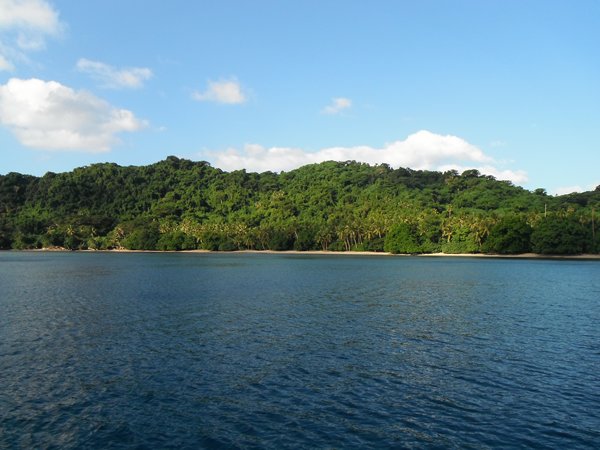 And what it looked like from the
boat.
 What dreams are made
of!
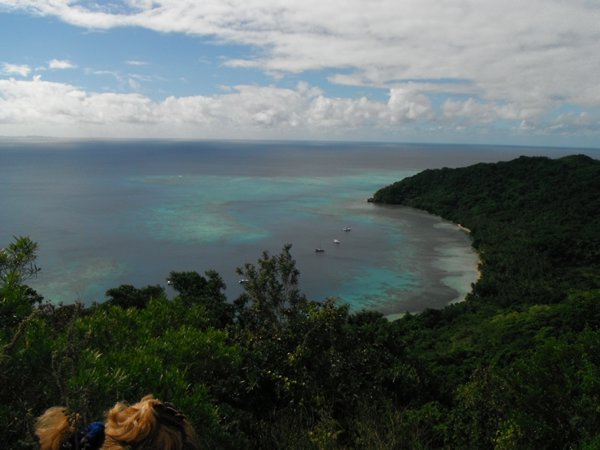 One of the locals who lives here guided
a few of us up to a high point overlooking
the cove. It was quite a trek up hill (75
minutes or more) through the forest, but the
view of the cove and reef was stunning.
Aurora B is the middle boat of the 3 visible.
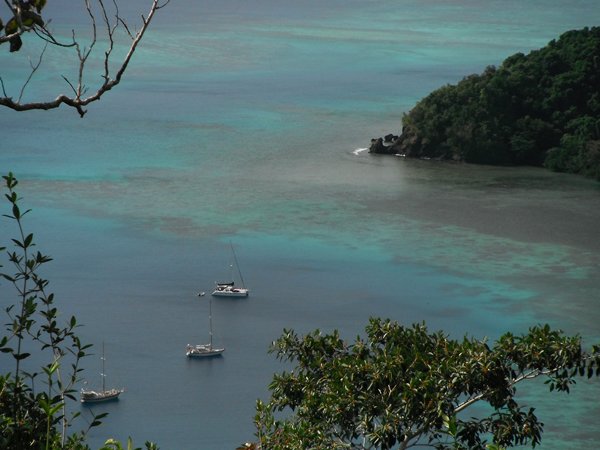 A close-up of Aurora B (as much as we could
get with the camera we took up).
 The intrepid climbers, which included Liz
who's taking the photo. Bill, our guide, is
second to the left. We all wore walking
shoes, he didn't!
 A stroll along the beach (with her NZ
walking pole in hand).
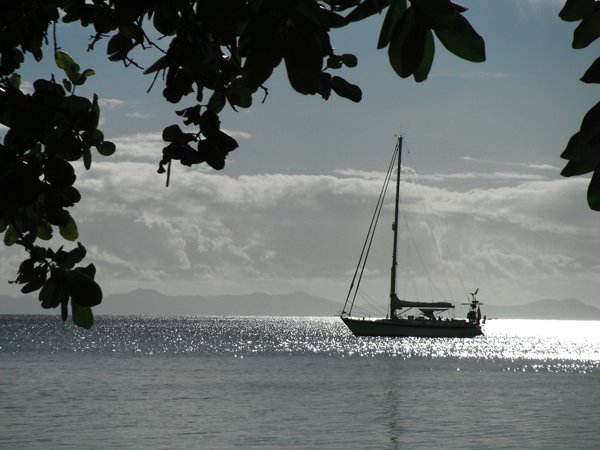 Now that's a nice
picture!
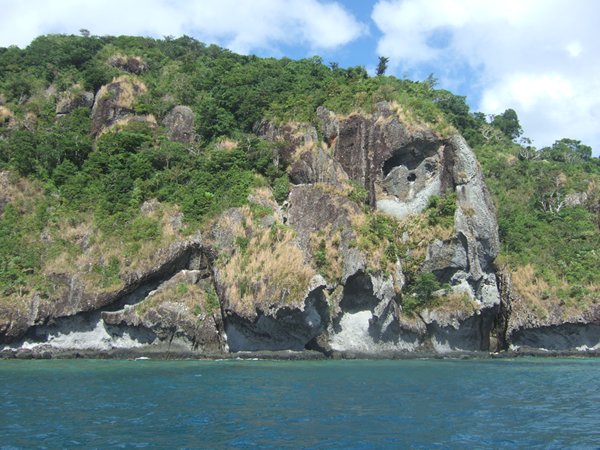 We toured the cove and surrounding bays in
the dinghy. The rocks here have been
undercut by the
waves.
 Ready for a snorkel in
one of the adjoining bays with a deserted sandy
beach.
 The locals demonstrating their weaving to
the women from the western world.
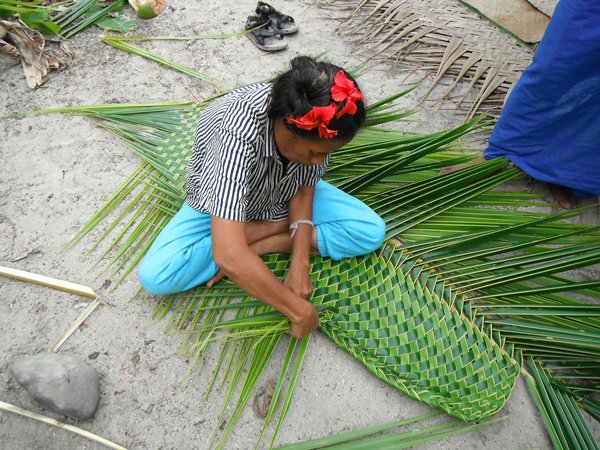 A sleeping mat made from coconut palm
leaves.
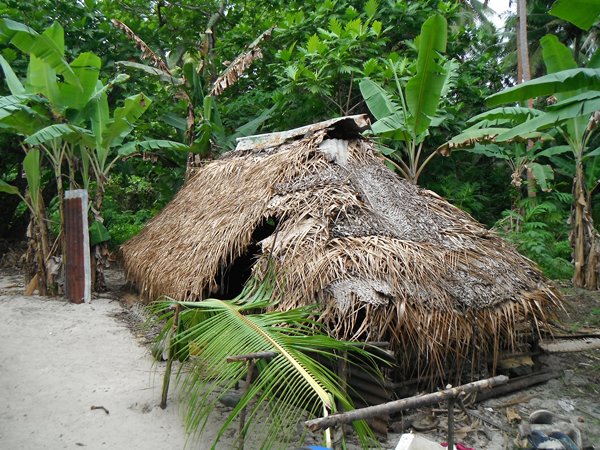 The family home.
 The other main house at the Cove. Note the
little solar panel on the thatch!
(Probably a gift from a passing
boat.)
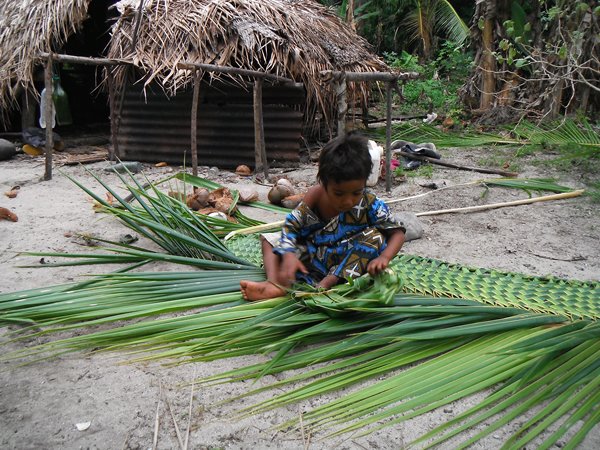 The youngest child playing with a plaited
plate.
 All ready for dancing. The leaves and
flowers had been collected from the forest.
The speakers were plugged into a battery powered flash-card player and
the other
locals looked on. Improvised kava bowl
(an old plastic buoy cut in
half) to the left.
 And the dancing began - not unlike the
Polynesian dancing we have seen,
but more gentle and
artistic.
 The corals here were
pretty good too.
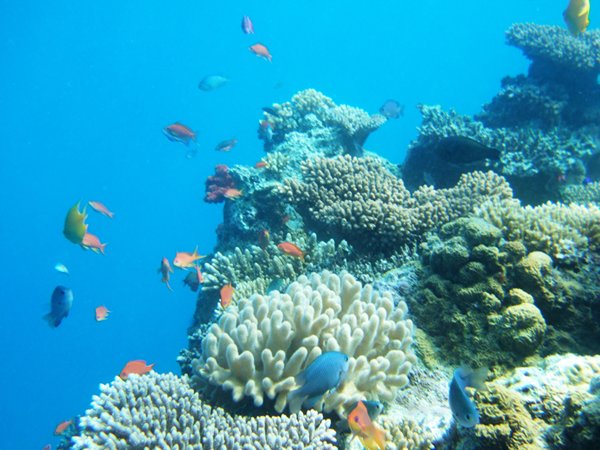 With more fish than some of the other
areas.
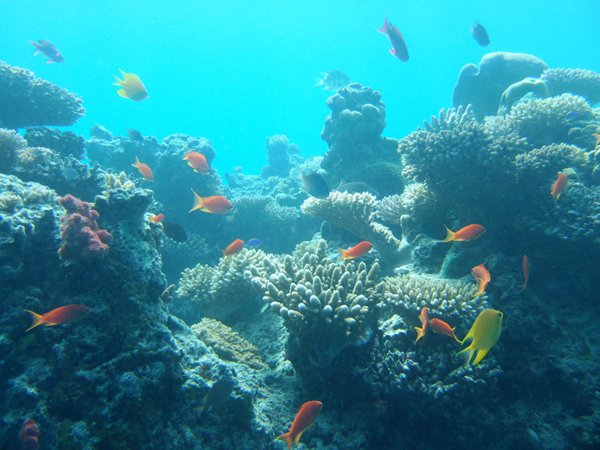 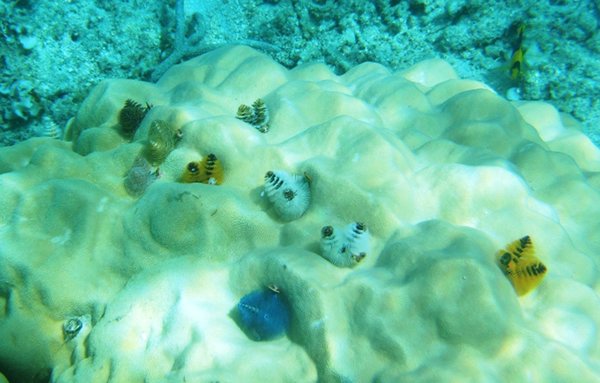 Christmas Tree worms of
different colours on the white coral.
 Can't remember the last time we saw a blue
one.
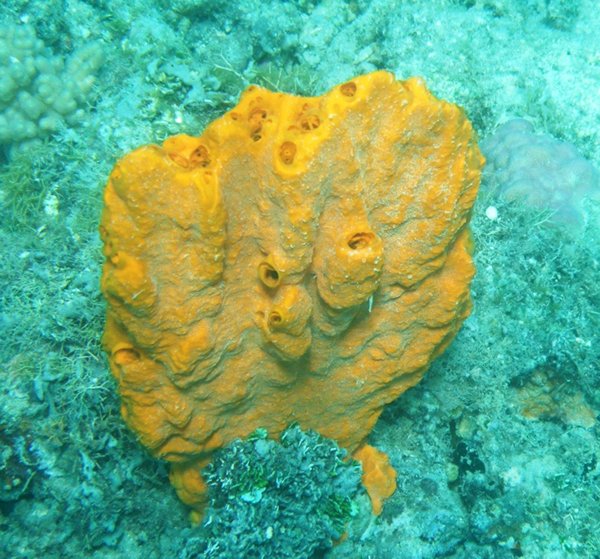 A sponge, all on its
own.
|